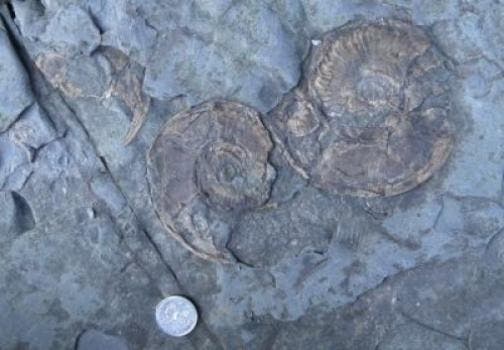The massive, global risk that global warming poses has once again been highlighted by researchers – this time, by geologists studying fossil records.

It’s good to learn from your mistakes, but it’s even better to prevent than treat, and learn from the past (even though it’s not your past) – and paleontology is really good at this. After all, we have over billion years of fossil evidence of life (though “only” a few hundred millilon years of evolved life). Ancient geologic evidence doesn’t only preserve animal information, but also climatic and environmental changes, as well as all sorts of other useful information.
Now, researchers from Plymouth University have shown how higher temperatures and lower oxygen levels caused drastic changes to marine communities, and that even though the Jurassic seas eventually recovered from the effects of global warming, the marine ecosystems that returned were noticeably different from before.
Professor Richard Twitchett, from the University’s School of Geography, Earth and Environmental Sciences, and a member of its Marine Institute, explained:
“Our study of fossil marine ecosystems shows that if global warming is severe enough and lasts long enough it may cause the extinction of marine life, which irreversibly changes the composition of marine ecosystems.”
He analyzed marine sedimentary rocks and the fossils they contained – which provided information about the environment in which the rocks were deposited and the creatures lived. After this, working with Dr Crispin Little from the University of Leeds, they correlated their initial results with other ecological data, ultimately reaching some conclusions on changes in temperature, sea level and oxygen concentrations.
“Back in the laboratory, we broke down the samples and identified all of the fossils, recording their relative abundance much like a marine biologist would do when sampling a modern environment. Then we ran the ecological analyses to determine how the marine seafloor community changed through time.”
Most notably, the team found a ‘dead zone’ recorded in the rock – showing virtually no evidence of fossils. After this period ended, the emerging life forms were much different than those initially there.
“The results show in unprecedented detail how the fossil Jurassic communities changed dramatically in response to a rise in sea level and temperature and a decline in oxygen levels. Patterns of change suffered by these Jurassic ecosystems closely mirror the changes that happen when modern marine communities are exposed to declining levels of oxygen. Similar ecological stages can be recognised in the fossil and modern communities despite differences in the species present and the scale of the studies.”
So basically, a significant change in environmental conditions will dramatically affect marine life, and even if it bounces back eventually, we’re talking about an entirely different equilibrium, and entirely different species. Also, another thing that’s worth noting is that the fact that this change took place in geologic time – millions of years; this is definitely something worth keeping in mind, as we are doing comparable changes to environment in hundreds or even tens of years – changes which will most likely change the fact of the Earth as we know it.






